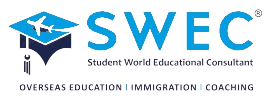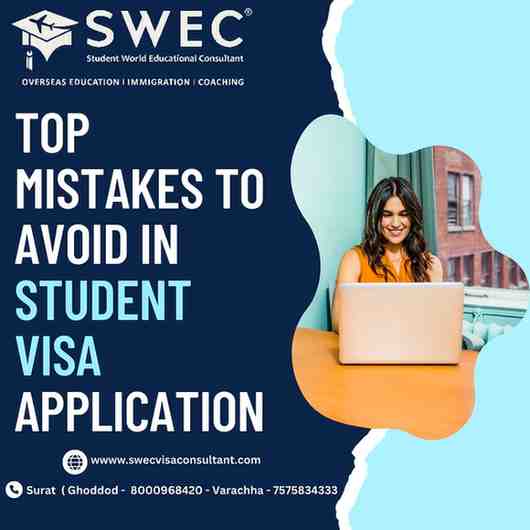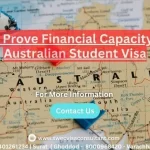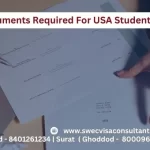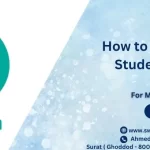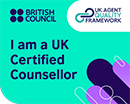Table of Contents
For many ambitious individuals, studying abroad represents an exciting opportunity to broaden their horizons, gain valuable skills, and pursue a world-class education. A US student visa, for instance, unlocks the door to prestigious universities, diverse academic programs, and the chance to immerse yourself in a vibrant and dynamic learning environment. However, securing this coveted visa requires careful preparation and a well-presented application.
The Pitfall of Avoidable Errors: Understanding Visa Rejection Rates
Unfortunately, the journey to studying abroad can be unexpectedly derailed by preventable mistakes in the visa application process. Statistics show that student visa applications are rejected each year. While reasons can vary, many rejections stem from common errors that could have been easily avoided.
Our Guiding Hand: Helping You Navigate the Application Process with Confidence
This comprehensive guide aims to equip you with the knowledge you need to navigate the student visa application process with confidence. By understanding the most frequent pitfalls applicants encounter, you can present a strong and error-free application that increases your chances of approval. Let’s explore these common mistakes and equip you with the strategies to avoid them, ensuring your dream of studying abroad becomes a reality.
Get Expert Guidance for Your Student Visa Application!
Our experienced consultants at SWEC are here to guide you through every step of the student visa application process. With personalized advice and comprehensive support, we ensure a smooth and successful visa application experience. Contact us today to schedule your free consultation and take the first step towards your dream education!
Common Mistakes in Student Visa Applications
1. Incomplete or Incorrect Application Forms
A seemingly simple mistake can have significant consequences. Incomplete or inaccurate application forms are a major reason for visa rejections. Remember, these forms are your official introduction to the visa officer and missing or incorrect information can raise red flags and cast doubt on your application’s legitimacy.
Importance of Accuracy and Completeness:
Visa applications are intricate documents with specific fields that require complete and accurate information. This includes personal details like your name, date of birth, passport number, and educational background. Additionally, sections related to your financial resources, study plans, and intended duration of stay must be filled out comprehensively.
Common Errors to Watch Out For:
- Missing Fields: Leaving sections blank, even unintentionally, can create a negative impression.
- Incorrect Personal Details: Typos, inconsistencies, or discrepancies between your application and supporting documents can cause delays or rejections.
- Inconsistent Information: Ensure all details you provide, from travel dates to financial sponsorships, are consistent throughout the application and supporting documents.
How to Avoid These Mistakes:
- Double-Check Everything: Before submitting your application, thoroughly review all sections for completeness and accuracy. Proofread meticulously, paying close attention to dates, names, and numbers.
- Utilize a Checklist: Many official visa application websites provide downloadable checklists to ensure you haven’t missed any crucial information.
- Seek Guidance: Don’t hesitate to seek assistance from visa consultants or your university’s international student advisor. They can offer valuable insights and help you avoid common pitfalls.
2. Insufficient Financial Documentation
Demonstrating sufficient financial resources is a crucial aspect of your student visa application. Visa authorities need to be convinced that you have the financial means to cover your tuition fees and living expenses for the duration of your studies.
Common Mistakes to Avoid:
- Outdated Bank Statements: Submit recent bank statements (typically within the last 3-6 months) that accurately reflect your financial standing.
- Insufficient Funds: Ensure your bank balance or sponsor’s financial resources are sufficient to cover all anticipated costs. Research the average living expenses in your chosen study location and factor that into your calculations.
- Limited Proof of Funds: If your bank account balance falls short of the required amount, consider including additional financial documents like scholarship awards, sponsorship letters, or proof of employment income (if applicable).
3. Lack of Proper Supporting Documents
A complete application package includes all the documents listed by the visa authority. Missing essential documents can significantly delay your application or lead to rejection.
How to Avoid Omissions:
- Create a Checklist: Utilize the official visa application website’s checklist to ensure you have all the required documents.
- Country-Specific Requirements: Double-check if the country you’re applying to has any additional document requirements beyond the standard list.
- Correct Format and Language: Ensure all documents are in the requested format (e.g., photocopies, originals) and translated into the official language of the country, if necessary.
Secure Your Student Visa with SWEC!
Navigating the student visa application process can be challenging. At SWEC, we specialize in helping students like you achieve their study abroad dreams in the USA, UK, Canada, and Australia. Our experts provide tailored guidance, ensuring you meet all requirements and avoid common pitfalls. Apply now for our student visa consultancy services and secure your future!
4. Not Meeting Language Proficiency Requirements
Many countries require international students to demonstrate proficiency in the language of instruction (typically English). This is usually proven through standardized tests like IELTS or TOEFL.
Common Mistakes to Address:
- Low Scores: Aim for a score that exceeds the minimum requirement set by your chosen university and visa authority.
- Expired Test Results: Ensure your test results are valid at the time of application. Most tests have a validity period of 2 years.
5. Inadequate or Misleading Personal Statements
Your statement is a critical opportunity to showcase your academic goals, motivations, and suitability for the chosen program. Generic content or plagiarism can raise doubts about your sincerity.
How to Craft a Strong Statement:
- Personalize Your Story: Don’t rely on generic templates. Highlight your specific academic background, career aspirations, and genuine reasons for choosing the program and country.
- Demonstrate Passion: Express your enthusiasm for your chosen field of study and how this program aligns with your academic goals.
- Proofread and Edit: Ensure your writing is clear, concise, and free of grammatical errors. Originality is key!
6. Ignoring Visa Interview Preparation
The visa interview, if required, is an opportunity to elaborate on your application and demonstrate your confidence. Being unprepared can create a negative impression.
Prepare for Success:
- Research Common Questions: Anticipate typical interview questions and prepare clear and concise answers.
- Practice Makes Perfect: Rehearse your responses beforehand to ensure you come across as articulate and confident.
- Honesty and Consistency: Be honest and consistent in your answers, reflecting the information provided in your written application.
7. Failure to Meet Health and Medical Requirements
Many countries require international students to undergo mandatory health checks and possess valid health insurance before granting a visa.
Common Mistakes to Avoid:
- Missing Medical Certificates: Schedule medical examinations well in advance to ensure you receive the necessary certificates on time.
- Lack of Health Insurance: Purchase a comprehensive health insurance plan that meets the minimum coverage requirements set by the visa authority.
8. Not Adhering to Application Deadlines
Timely submission of your application is crucial. Missing deadlines can cause delays, affect processing times, or even lead to disqualification.
How to Avoid Last-Minute Scrambles:
- Start Early: Don’t wait until the last minute to begin the application process. Factor in processing times and potential delays.
- Track Deadlines: Maintain a clear record of all deadlines associated with the application process, including document submission and interview dates.
- Set Personal Deadlines: Set personal deadlines for yourself well in advance of the official deadlines to ensure you have ample time to complete each step thoroughly.
Personalized Student Visa Consultancy Services
Every student’s journey is unique, and so are their visa application needs. At SWEC, we offer personalized consultancy services to help you obtain your student visa for the USA, UK, Canada, or Australia. Our dedicated team will work closely with you to understand your goals and provide customized support. Book your consultation now and let us help you achieve your academic aspirations!
9. Incorrect Visa Category Selection
There are different types of student visas, each with specific eligibility criteria and application processes. Choosing the wrong category can lead to rejection.
How to Choose the Right Visa:
- Research Visa Categories: Carefully research the different visa categories offered by your chosen country of study. Identify the category that best aligns with your program duration, study goals, and intended activities.
- Seek Expert Advice: If you’re unsure about the appropriate visa category, seek guidance from immigration consultants or your university’s international student advisor.
- Double-Check Requirements: Once you’ve selected the visa category, thoroughly review the specific requirements and ensure your application adheres to them completely.
10. Failure to Follow Up on the Application Status
After submitting your application, it’s crucial to stay informed about its status. Delays or missing information can sometimes hold up the process.
Stay Proactive:
- Monitor Your Application Status: Regularly check the online application portal or contact the visa authority for updates on your application’s progress.
- Respond Promptly: Be prepared to respond promptly to any requests for additional information or clarifications from the visa authorities.
- Update Contact Information: Ensure your contact details (phone number and email address) are accurate and up-to-date so you don’t miss any important communications.
By avoiding these common pitfalls and following the provided tips, you can significantly increase your chances of securing a smooth and successful student visa application. In the next section, we’ll explore Country Specific Student Visa Mistakes to Avoid and considerations to help you confidently navigate the student visa application process.
Country-Specific Considerations
United Kingdom (UK)
The UK remains a popular destination for international students. However, the application process for UK has some unique requirements to be aware of:
Common Mistakes to Avoid:
- Inaccurate Confirmation of Acceptance for Studies (CAS) Details: The CAS is a crucial document issued by your chosen UK university, confirming your enrollment and financial sponsorship. Ensure all details on your application match the information provided on your CAS exactly.
- Overlooking the Tuberculosis (TB) Test Requirement: Many nationalities require a mandatory TB test before applying for a UK student visa. Schedule your test well in advance and include the test results with your application package.
How to Avoid These Mistakes:
- Verify CAS Details: Double-check all information on your application form with the details mentioned on your CAS. This includes program name, start date, and tuition fees.
- Schedule Your TB Test Early: Research the TB test requirements for your nationality and schedule the test well before you submit your visa application. This can take several weeks, so plan accordingly.
By being aware of these UK-specific requirements and ensuring your application reflects them accurately, you can avoid unnecessary delays and increase your chances of a successful visa application.
Comprehensive Support for Your Student Visa Success
Ensure a successful student visa application with SWEC’s comprehensive consultancy services. From initial consultation to document preparation and interview coaching, we cover all aspects of the process. Our experts have a proven track record of helping students secure visas for the USA, UK, Canada, and Australia. Reach out to us today and let’s make your study abroad dreams a reality!
United States (USA)
The US continues to be a top choice for international students seeking a world-class education. However, the US student visa process has its own set of regulations to navigate:
Common Mistakes to Avoid:
- SEVIS Fee Payment Delays: The Student and Exchange Visitor Information System (SEVIS) fee is a mandatory payment for all F and M visa applicants. Failing to pay this fee on time can significantly delay your visa application processing.
How to Avoid This Mistake:
- Pay Upon Receiving I-20: Once you receive your I-20 form from your chosen US university, pay the SEVIS fee promptly. You can pay online or via mail using the instructions provided on the I-20 form. Don’t wait until the last minute to avoid any potential complications.
- Misunderstanding F-1 Visa Requirements: The F-1 visa category is the most common visa type for international students in the US. However, there are specific requirements regarding enrollment status, full-time course load, and maintaining valid health insurance.
- Research F-1 Visa Regulations: Thoroughly research the specific requirements for the F-1 visa category. Ensure your academic program, course schedule, and financial resources comply with all regulations to avoid potential application rejections. Utilize resources provided by the US Department of State and your chosen university’s international student advisor for up-to-date information.
By understanding these US-specific considerations and ensuring your application adheres to them, you can navigate the US student visa process with confidence and increase your chances of securing a successful outcome.
Australia
Australia is another top contender for international students, offering a vibrant academic environment and diverse study options. However, the Australian student visa process has its intricacies to consider:
Common Mistakes to Avoid:
- Incomplete Genuine Temporary Entrant (GTE) Statement: The GTE statement is a crucial component of your Australian student visa application. It requires you to explain your genuine reasons for choosing to study in Australia and your plans after completing your studies. Many applicants make the mistake of submitting a generic or incomplete GTE statement.
How to Avoid This Mistake:
- Craft a Compelling GTE Statement: Take the time to create a well-structured and personalized GTE statement. Clearly articulate your academic goals, explain why you’ve chosen Australia for your studies, and demonstrate your intention to return to your home country after completing your program. Utilize resources provided by the Australian Department of Home Affairs for guidance on crafting a strong GTE statement.
- Failing to Meet Health Insurance Requirements: Australian student visas require applicants to possess Overseas Student Health Cover (OSHC). This health insurance provides coverage for medical and hospital expenses during your stay in Australia.
- Purchase OSHC Before Applying: Research and choose an OSHC plan that meets the minimum requirements set by the Australian government. Purchase your OSHC policy and include proof of enrollment with your visa application.
By understanding these Australia-specific considerations and ensuring your application adheres to them, you can navigate the Australian student visa process with confidence and increase your chances of securing a successful outcome.
Your Trusted Partner in Student Visa Applications
Applying for a student visa can be overwhelming, but you don’t have to do it alone. SWEC is your trusted partner in navigating the complexities of visa applications for the USA, UK, Canada, and Australia. With our expert advice and dedicated support, you can confidently approach your application. Contact us now to get started and achieve your educational goals!
Canada
Canada is a popular destination for international students, known for its high-quality education system and multicultural environment. However, the Canadian student visa process has its own set of requirements to be aware of:
Common Mistakes to Avoid:
- Lack of a Detailed Study Plan: A Study Plan is a crucial document that explains your academic goals and motivates your choice to study in Canada. Many applicants submit generic or poorly defined study plans, which can weaken their applications.
How to Avoid This Mistake:
- Craft a Clear and Detailed Study Plan: Develop a well-structured Study Plan that outlines your academic objectives, the chosen program’s relevance to your career aspirations, and any future educational plans you may have. Explain how studying in Canada aligns with your goals and showcases your commitment to completing your studies. Utilize resources provided by Immigration, Refugees and Citizenship Canada (IRCC) for guidance on crafting a strong Study Plan.
- Failing to Provide Biometrics on Time: Biometrics, which include fingerprints and a photograph, are a mandatory requirement for most Canadian student visa applications. Missing deadlines or failing to complete biometrics can significantly delay your application processing.
- Schedule Biometrics Promptly: Once you receive instructions to provide biometrics, schedule an appointment at a designated Service Canada Application Centre (SCAC) as soon as possible. Ensure you attend your appointment on time and complete the biometrics process to avoid any delays in processing your visa application.
By understanding these Canada-specific considerations and ensuring your application adheres to them, you can navigate the Canadian student visa process with confidence and increase your chances of securing a successful outcome.
Conclusion
Securing a student visa is crucial to achieving your dream of studying abroad. This comprehensive guide has shed light on some of the most common pitfalls applicants encounter in the student visa application process. By understanding these potential roadblocks and following the provided tips, you can significantly increase your chances of a smooth and successful application.
Key Takeaways:
- Accuracy and Completeness: Ensure all application forms are filled out accurately and completely. Double-check every detail before submitting your application.
- Strong Supporting Documents: Gather all required documents well in advance and ensure they meet the specific format and language requirements.
- Demonstrate Financial Strength: Provide clear evidence of sufficient financial resources to cover your tuition and living expenses throughout your studies.
- Meet Language Requirements: Achieve the required score on standardized language tests like IELTS or TOEFL.
- Craft a Compelling Personal Statement: Write a personalized statement that showcases your genuine motivations and suitability for the chosen program.
- Prepare for the Visa Interview: Research common interview questions and practice your responses to present yourself confidently.
- Adhere to Deadlines: Meet all application deadlines and respond promptly to any requests for additional information.
- Country-Specific Requirements: Research the specific requirements for your chosen country of study to avoid any unexpected hurdles.
Achieve Your Study Abroad Dreams with SWEC
At SWEC, we are committed to helping students like you realize their study abroad ambitions. Our expert consultants provide end-to-end support for student visa applications to the USA, UK, Canada, and Australia. We ensure that you are well-prepared and meet all the necessary criteria for a successful application. Apply now for our student visa consultancy services and take the first step towards a brighter future!
Planning and Professional Guidance:
The student visa application process can be complex and involve a multitude of details. Careful planning and attention to detail are crucial for a successful outcome. Consider seeking professional guidance from visa consultants or your university’s international student advisor. Their expertise can help you navigate the process with greater confidence and ensure your application is presented to the best possible advantage.
Ready to Take the Next Step?
Are you prepared to embark on your exciting journey as an international student? Contact SWEC today! Our team of experienced visa consultants is here to provide personalized guidance and support throughout the student visa application process. Increase your chances of success and turn your study abroad dream into reality. Contact us today for a free consultation!
Frequently Asked Questions for Student Visa Applications
Q1. How can I avoid student visa rejection?
Ans1. To avoid student visa rejection, ensure all forms are accurately filled out, provide sufficient financial documentation, meet language proficiency requirements, and submit all necessary supporting documents. Thorough preparation for the visa interview is also crucial.
Q2. Why would a student visa get rejected?
Ans2. Common reasons for student visa rejection include incomplete or incorrect application forms, insufficient financial proof, not meeting language proficiency requirements, lack of proper supporting documents, and poor performance in the visa interview.
Q3. What not to say in a student visa interview?
Ans3. Avoid mentioning plans to work in the host country after graduation, overstating financial hardships, or providing inconsistent or false information about your study plans and intentions.
Q4. What makes a visa application rejected?
Ans4. Visa applications can be rejected for various reasons, including incomplete documentation, insufficient funds, failure to meet health or character requirements, providing false information, and not meeting language proficiency standards.
Q5. What is the most common visa rejection?
Ans5. The most common reasons for visa rejections are insufficient financial proof and incomplete or inaccurate application forms.
Q6. Which country rejects most student visas?
Ans6. The rejection rate for student visas varies, but historically, countries like the USA and Canada have higher rejection rates due to stringent application requirements.
Q7. What do visa officers check for a student visa?
Ans7. Visa officers check for accurate and complete application forms, proof of sufficient funds, valid admission to a recognized institution, language proficiency, and overall intent to return to the home country after studies.
Q8. Can I get a student visa after refusal?
Ans8. Yes, you can reapply for a student visa after refusal. However, you should address the reasons for the initial rejection and provide additional or corrected documentation as required.
Q9. What is the rejection rate for student visas?
Ans9. The rejection rate for student visas varies by country and specific circumstances but can range from 10% to 30% depending on the destination country and applicant profile.
Q10. How to impress a visa officer?
Ans10. Impress a visa officer by being well-prepared, providing clear and honest answers, demonstrating strong ties to your home country, and showcasing your knowledge and preparedness for your chosen course and institution.
Q11. How to pass a visa interview?
Ans11. To pass a visa interview, prepare thoroughly, be honest and consistent in your responses, provide all necessary documentation, and demonstrate your genuine intent to study and return to your home country after completing your studies.
Q12. What you cannot do on a student visa?
Ans12. On a student visa, you cannot work full-time without authorization, engage in illegal activities, overstay the visa period, or switch to a different type of visa without proper authorization.
Q13. How can I avoid rejection of a visa?
Ans13. Avoid visa rejection by ensuring all application forms are accurately filled, providing sufficient financial proof, meeting language proficiency requirements, and preparing thoroughly for the visa interview.
Q14. In which case visa gets rejected?
Ans14. Visas get rejected in cases of incomplete or incorrect documentation, insufficient funds, failing to meet health or character requirements, providing false information, and not meeting specific visa requirements.
Q15. How to explain a gap year in a visa interview?
Ans15. Explain a gap year in a visa interview by providing valid reasons such as gaining work experience, taking care of family matters, or preparing for further studies. Be honest and provide any supporting documentation.
Q16. Is it possible to get a visa after rejection?
Ans16. Yes, it is possible to get a visa after rejection. Reapply by addressing the reasons for the initial rejection and providing additional or corrected documentation as required.
Q17. How to answer visa refusal questions?
Ans17. Answer visa refusal questions honestly and provide clear, concise explanations for any issues that led to the refusal. Highlight any changes or improvements in your application and documentation.
Q18. Do we get a refund if a visa is rejected?
Ans18. Typically, visa application fees are non-refundable, even if the visa is rejected. Check the specific refund policies of the country you are applying to.
Q19. Which country gives a student visa easily?
Ans19. Countries like Germany, Ireland, and New Zealand are known for having more straightforward and student-friendly visa processes compared to others.
Q20. Which country is hardest to get a student visa?
Ans20. Countries like the USA and Canada are often considered more challenging due to their stringent requirements and higher rejection rates.
Q21. Which country has the highest student visa acceptance rate?
Ans21. Countries like Australia and Germany have relatively high student visa acceptance rates due to their clear and supportive application processes.
Q22. What not to say in a visa interview?
Ans22. Avoid mentioning plans to stay in the host country permanently, working without authorization, or providing inconsistent or false information about your intentions.
Q23. How to dress for a visa interview?
Ans23. Dress formally and professionally for a visa interview. Avoid casual attire like jeans and t-shirts; instead, opt for business casual or formal clothing.
Q24. How can I impress in a visa interview?
Ans24. Impress in a visa interview by being well-prepared, providing clear and honest answers, demonstrating strong ties to your home country, and showing confidence and enthusiasm about your study plans.
Q25. How do I convince a visa officer?
Ans25. Convince a visa officer by providing complete and accurate documentation, demonstrating genuine intent to study and return home, and clearly explaining your study plans and future goals.
Q26. How can I introduce myself in a student visa interview?
Ans26. Introduce yourself by stating your name, the course and university you have been admitted to, and briefly mentioning your educational background and career aspirations.
Q27. Is a student visa interview hard?
Ans27. A student visa interview can be challenging, but thorough preparation and understanding of common questions can help you succeed.
Q28. Which country has the lowest visa rejection rate?
Ans28. Countries like Germany and New Zealand typically have lower visa rejection rates compared to others.
Q29. Why do students’ visas get rejected?
Ans29. Student visas get rejected for reasons such as incomplete or incorrect documentation, insufficient funds, failure to meet language proficiency or health requirements, and inconsistent or false information.
Q30. How can I justify my gap?
Ans30. Justify your gap by providing valid reasons such as gaining work experience, taking care of personal or family matters, or preparing for further studies. Provide supporting documentation if possible.
Q31. What is the best answer for a year gap?
Ans31. The best answer for a year gap is an honest explanation of what you did during that time, such as gaining relevant work experience, volunteering, or preparing for further studies. Emphasize how the gap has positively impacted your personal and professional growth.
Q32. How to cover a 3-year gap?
Ans32. Cover a 3-year gap by providing detailed reasons and activities undertaken during the gap, such as work experience, skill development, volunteering, or taking care of personal matters. Support your explanation with relevant documents.
Q33. Which country gives PR in 2 years?
Ans33. Countries like Canada and Australia offer pathways to permanent residency (PR) within a few years for international students who meet certain criteria, such as completing a degree and gaining relevant work experience.
Q34. Which country gives PR fast?
Ans34. Canada and Australia are known for relatively fast and clear pathways to permanent residency for international students and skilled workers.
Q35. Which visa is best for a student?
Ans35. The best visa for a student is typically the student visa specific to their country of study, such as the F-1 visa for the USA, the Tier 4 (General) student visa for the UK, or the Student Visa (subclass 500) for Australia.
Q36. Which colour is best for a visa interview?
Ans36. Neutral and professional colours such as navy blue, black, grey, and white are best for a visa interview. Avoid bright or flashy colours.
Q37. Can I wear a T-shirt for a visa interview?
Ans37. It is not recommended to wear a t-shirt for a visa interview. Opt for formal or business casual attire to make a good impression.
Q38. Can we wear a Kurti for a visa interview?
Ans38. Yes, wearing a Kurti is acceptable as long as it is modest and professional. Pair it with formal bottoms and avoid overly casual styles.
Q39. How to crack a student visa interview?
Ans39. Crack a student visa interview by preparing thoroughly, practising common questions, being honest and consistent in your responses, and presenting yourself confidently and professionally.
Q40. How to greet a visa officer in an interview?
Ans40. Greet a visa officer politely and formally. A simple “Good morning” or “Good afternoon” followed by a smile and a firm handshake (if appropriate) is sufficient.
Q41. What do visa officers see on their screen?
Ans41. Visa officers see your application details, supporting documents, financial proof, and any previous visa history on their screen. They may also see notes from previous visa interviews or applications.
Q42. What if CAS is rejected?
Ans42. If your CAS (Confirmation of Acceptance for Studies) is rejected, contact your educational institution to understand the reasons and rectify any issues. Ensure all documentation and information are accurate before reapplying.
Q43. How to explain a 1-year gap in SOP?
Ans43. Explain a 1-year gap in your Statement of Purpose (SOP) by providing valid reasons such as gaining work experience, preparing for exams, volunteering, or taking care of personal matters. Highlight how this time has contributed to your growth and readiness for further studies.
Q44. How to justify a study gap?
Ans44. Justify a study gap by explaining the reasons for the gap, such as gaining relevant work experience, preparing for exams, or addressing personal or family matters. Provide supporting documents if necessary.
Q45. How to explain gaps in a CV?
Ans45. Explain gaps in your CV by providing clear and honest reasons, such as employment, skill development, volunteering, or personal matters. Highlight any relevant experiences gained during the gap.
Q46. Can I wear jeans for a visa interview?
Ans46. It is not recommended to wear jeans for a visa interview. Opt for formal or business casual attire to make a professional impression.
Q47. What is the dress code for VFS?
Ans47. There is no strict dress code for VFS (Visa Facilitation Services), but it is advisable to dress neatly and professionally, as you may interact with officials and submit important documents.
Q48. How to pass a visa interview?
Ans48. Pass a visa interview by preparing thoroughly, providing complete and accurate documentation, answering questions honestly and confidently, and demonstrating a genuine intent to study and return to your home country.
Q49. What words should you avoid during a visa interview?
Ans49. Avoid words and phrases that imply you intend to stay in the host country permanently, work illegally, or provide inconsistent or false information about your study plans.
Q50. How can I introduce myself in a visa interview?
Ans50. Introduce yourself by stating your name, the course and university you have been admitted to, and briefly mentioning your educational background and career aspirations.
Q51. How to impress the visa officer?
Ans51. Impress the visa officer by being well-prepared, providing clear and honest answers, demonstrating strong ties to your home country, and showcasing your knowledge and preparedness for your chosen course and institution.
Q52. How do I prepare for a student visa interview?
Ans52. Prepare for a student visa interview by researching common questions, practising your answers, gathering all necessary documents, dressing professionally, and understanding the specific requirements of your chosen country and institution.
Q53. How to be confident in a visa interview?
Ans53. Be confident in a visa interview by preparing thoroughly, practising common questions, being honest and consistent in your responses, and focusing on your genuine intent to study and return to your home country.
Q54. How to wish a visa officer for an interview?
Ans54. With a visa officer politely and formally, such as saying “Good morning” or “Good afternoon” with a smile and maintaining a respectful tone throughout the interview.
Q55. How to answer student visa interview questions?
Ans55. Answer student visa interview questions honestly and confidently, providing clear and concise information about your study plans, financial situation, and future goals. Be consistent with the information in your application and supporting documents.
Q56. How to answer why this university is in a visa interview? Ans56. Answer “Why this university?” by highlighting the university’s strengths, programs, and faculty that align with your academic and career goals. Mention any unique opportunities or resources the university offers that are relevant to your field of study.
